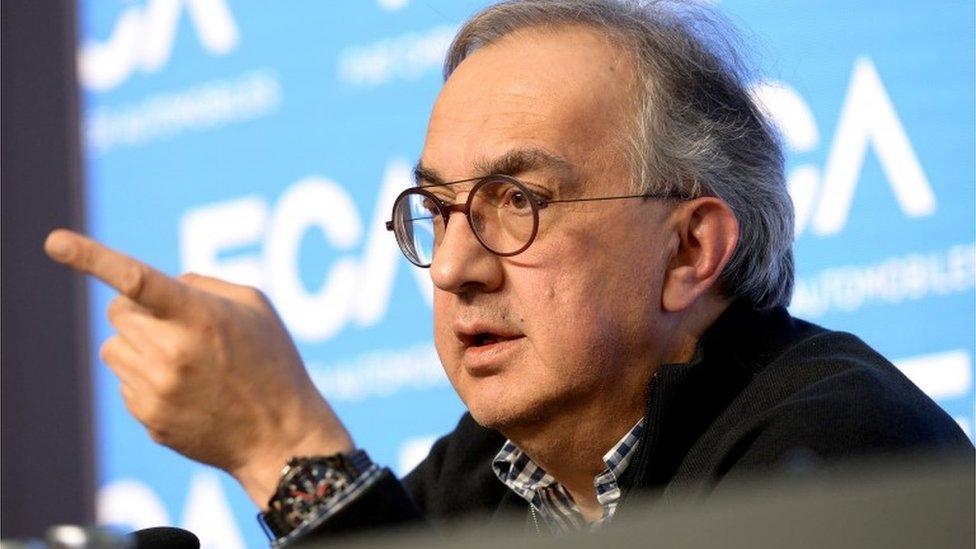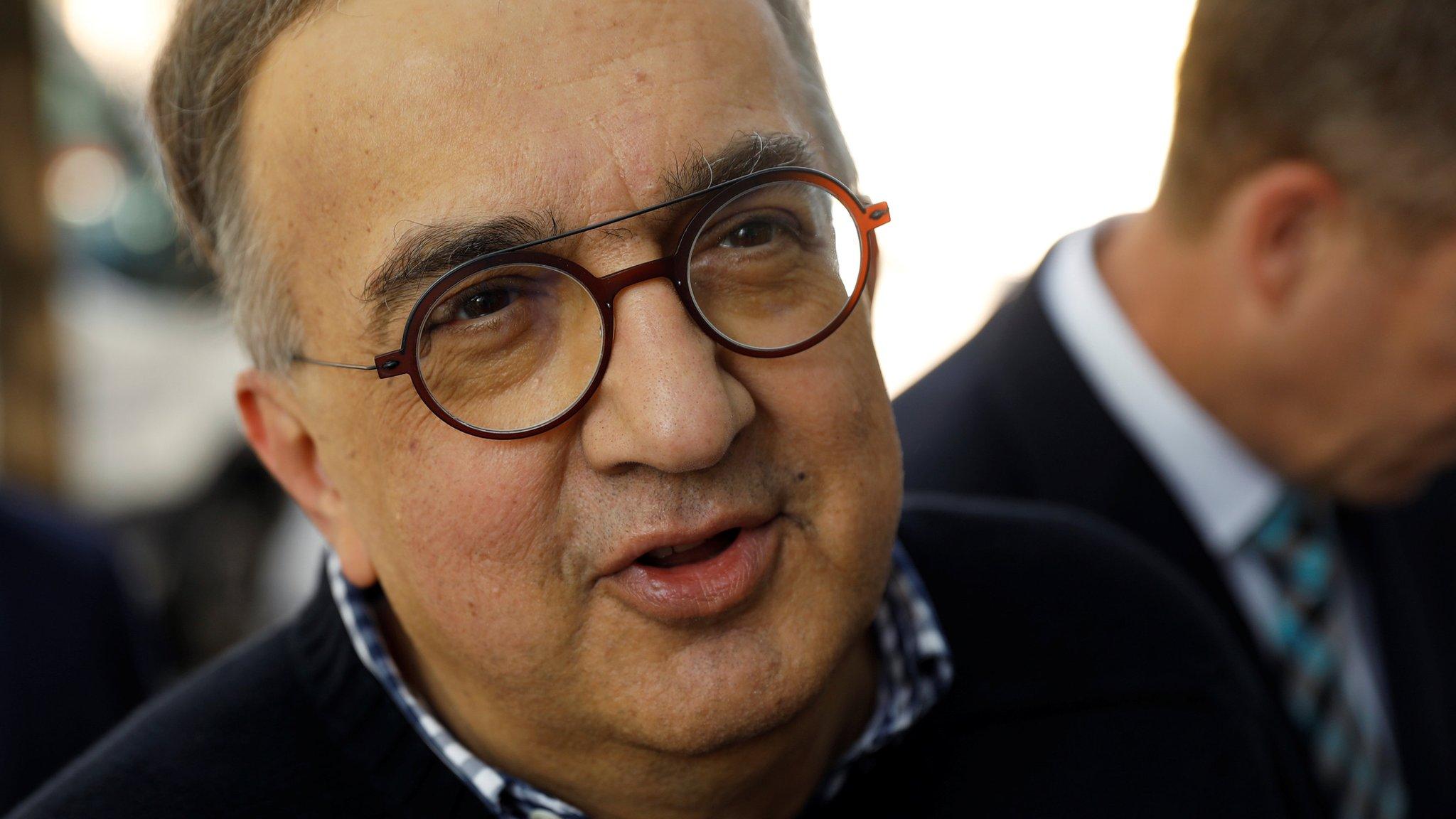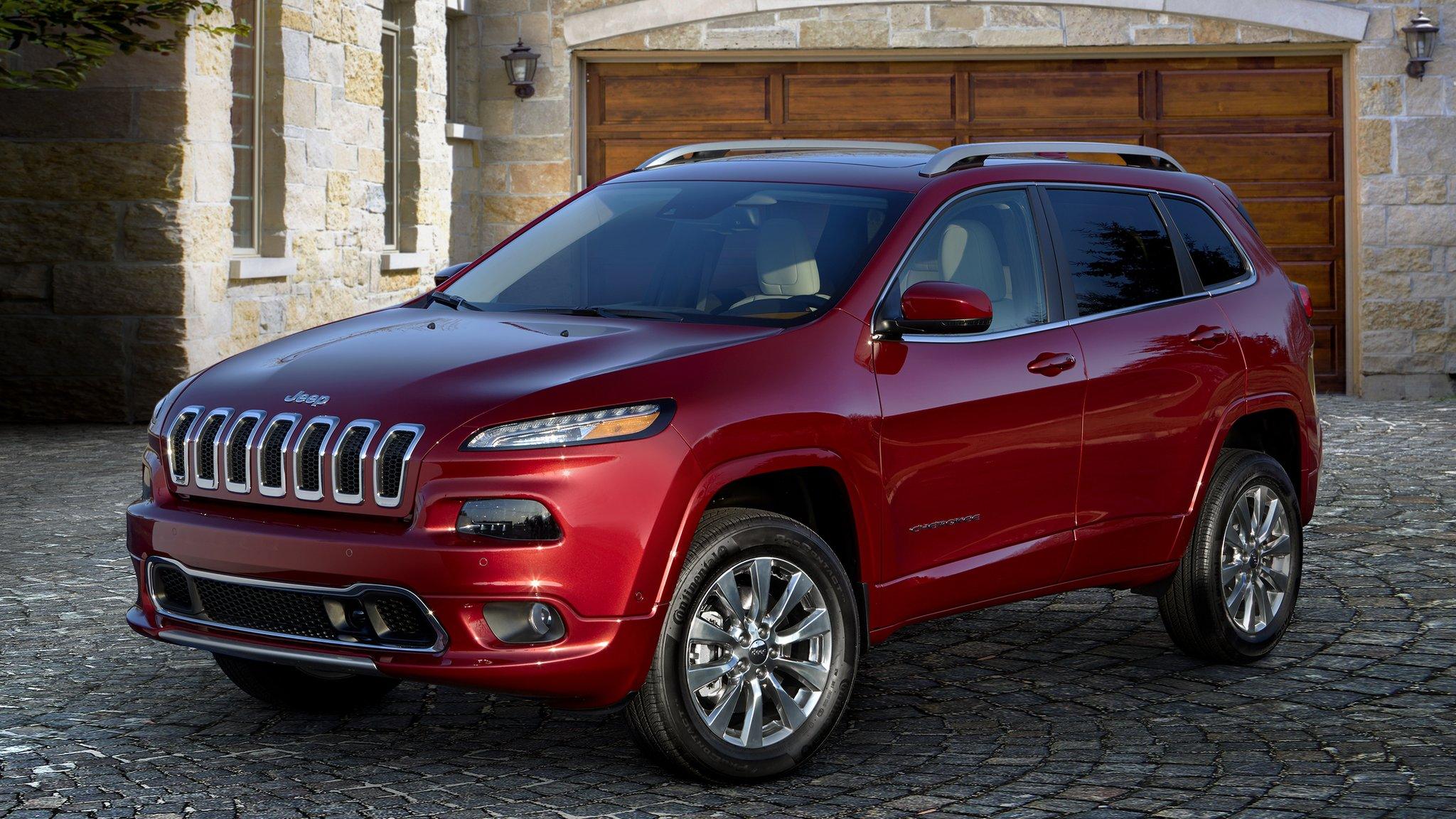Tributes pour in for ex-Fiat boss Marchionne
- Published

The former chief executive of carmaker Fiat-Chrysler, Sergio Marchionne, has died in hospital in Zurich aged 66.
He was replaced four days ago when his health worsened following complications from surgery on his right shoulder.
Mr Marchionne, who was also Ferrari's chairman, had led the combined company for more than a decade and planned to step down next year.
Mr Marchionne has been succeeded by Briton Mike Manley, head of the Italian-American firm's Jeep division.
"Unfortunately, what we feared has come to pass. Sergio Marchionne, man and friend, is gone," said group chairman John Elkann, a member of the Agnelli family that controls the company.
Tributes paid
Mr Elkann praised Mr Marchionne's "values of humanity, responsibility and open-mindedness".
He added: "My family and I will always be grateful for what he has done."

Analysis: Theo Leggett, BBC business correspondent
Sergio Marchionne was the architect who created Fiat Chrysler. Now, many investors are wondering what his loss will mean for the future of the company.
The news that he was being replaced as chief executive sent shares tumbling earlier this week.
Today, the company published its second quarter earnings. They were certainly disappointing - and exposed significant challenges in China.
The shares fell again - more dramatically this time. The question is... would the reaction have been so strong if Mr Marchionne had still been firmly in control?
He had been planning to retire next year - and the new chief executive, Mike Manley, had been widely tipped to succeed him.
That process had to be brought forward. The market reaction to today's figures suggests investors are still nervous about Mr Manley's ability to replace the former lynchpin of the company.

Politicians and car industry figures also paid tribute to Mr Marchionne.
Italian President Sergio Mattarella said: "Marchionne wrote an important page in the history of Italian industry. As leader of Fiat, he went through years of very deep and radical transformation of markets, production systems, financial strategies and trade union relations."
Former prime minister Silvio Berlusconi said: "With Sergio Marchionne, Italy loses not only the most brilliant of its managers, but one of the symbolic figures of our country. He represented the best of Italy."
Ford's executive chairman Bill Ford and Renault-Nissan-Mitsubishi chief executive Carlos Ghosn both expressed their sympathies.
Workaholic lifestyle
Mr Marchionne was seen as the driving force behind Fiat-Chrysler's growth.
Famous for his signature black jumpers, sharp tongue and workaholic lifestyle, he is credited with saving both Fiat and Chrysler from bankruptcy.
An accountant and lawyer by training, Mr Marchionne joined Fiat in 2004 after the death of its patriarch Gianni Agnelli.
In 2009, he presided over Fiat's merger with Chrysler, which was then the number three carmaker in the US.
He carried out two successful spin-offs from the merged group - first its tractor-making arm in 2011, which became CNH Industrial, then Ferrari, which was floated in 2016.
By this year, Mr Marchionne had managed to wipe out the group's near-$13bn (£10bn) debt pile, something he described as a "healing" process for two companies that for so long were associated with failure.
'Great leader'
Mr Marchionne was also a big figure in the world of Formula One, and after taking charge at Ferrari in 2014 oversaw a major restructuring of the racing team.
He formed a powerful alliance with Mercedes, fighting major changes to the sport being planned by new owners Liberty Media for 2021.
Mr Marchionne more than once threatened to pull Ferrari out of F1 after 2020 if he was unhappy with the changes.
Chase Carey, the chief executive of F1, described Mr Marchionne as "a great leader", both for the sport and in the business world generally.
"He led with great passion, energy and insight, and inspired all around him. His contributions to Formula One are immeasurable.
"He was also a true friend to all of us and he will be deeply missed."
- Published25 July 2018

- Published21 July 2018

- Published25 May 2018

- Attribution
- Published3 May 2018

- Attribution
- Published18 December 2017
